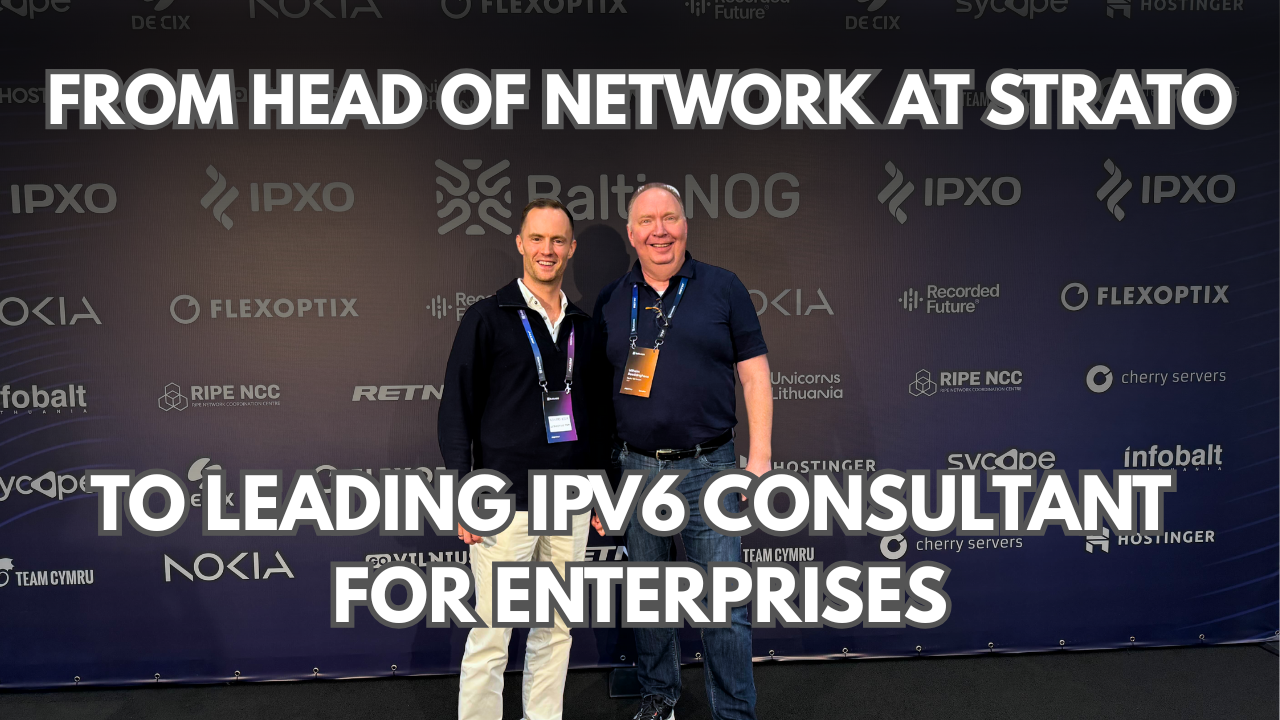BalticNOG – short for Baltic Network Operators Group – is the first event of its kind connecting network professionals across Lithuania, Latvia, and Estonia, but also opening doors to neighbors like Poland and Finland.
During this year’s edition, Konrad Keck sat down with Wilhelm Boeddinghaus – a long-time advocate of IPv6 and member of the German IPv6 Council – to talk about the real challenges and opportunities behind the Internet’s ongoing transformation.
The discussion began with reflections on the event itself. For Boeddinghaus, BalticNOG was “absolutely fantastic” – not only for its scale and organization but also for being the first major network operators’ meeting in the Baltics. From there, the conversation moved to his professional background, which stretches over three decades in the networking industry.
As Head of Network Development at STRATO, one of Germany’s largest hosting providers in the early 2000s, Boeddinghaus witnessed first-hand the early adoption of IPv6. STRATO began experimenting with IPv6 as early as 2008 and fully integrated it into their infrastructure by 2011 – years ahead of most of the market.
IPv6: a technical need with a business blind spot
Despite its clear technical advantages, IPv6 adoption remains slow, especially among enterprises.
Boeddinghaus pointed out that many companies still ask a simple but short-sighted question:
“How much money can we earn with IPv6?”
For service providers, the shortage of IPv4 addresses made IPv6 a necessity. But for enterprises, the benefits are less immediate. Complexity and high project costs have discouraged many from moving forward.
As Boeddinghaus explained, engineers often made IPv6 sound too complicated – multi-year projects, high budgets, endless training. “They don’t have the time or money for this,” he said. As a result, many organizations continue to rely on private IPv4 networks and heavy NAT use, which now cause more problems than they solve – especially in the era of digitalization, where constant data exchange with customers and partners is the norm.
Making IPv6 simple and practical
Today, Boeddinghaus runs his own consulting company focused entirely on helping enterprises and public institutions adopt IPv6 smoothly and cost-effectively. Instead of overengineering, his team promotes a best-practice-first approach – giving customers a clear path rather than multiple confusing options.
“We tell them, this is best practice. Start small, get your first IPv6 service running in a few weeks, and grow from there.”
His company offers concise training, a large knowledge base, and direct technical support, allowing organizations to deploy IPv6 without major disruption or massive investment.
Looking ahead
Boeddinghaus remains optimistic about the next decade. IPv6 adoption continues to grow worldwide – about five percent per year – though enterprises are still underrepresented in those statistics.
He expects that as more organizations face the limitations of IPv4 and complex NAT setups, IPv6 will become the natural way forward.
“I have the hope that in 10 years’ time, most enterprises will run IPv6 as their main protocol,”
he said, adding that IPv4 will probably remain around for another two or three decades as a “long tail.”This conversation, recorded at BalticNOG 2025, reflects the spirit of the event itself – open, practical, and forward-looking. IPv6 is no longer a futuristic concept; it’s a necessary step for the modern Internet. As Boeddinghaus shows, the transition doesn’t have to be complicated – it just needs the right mindset and guidance.
